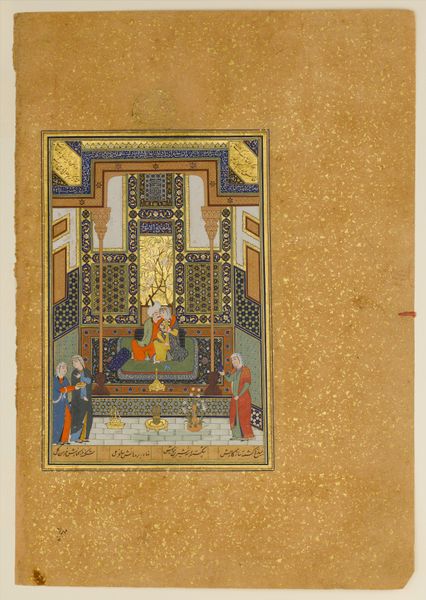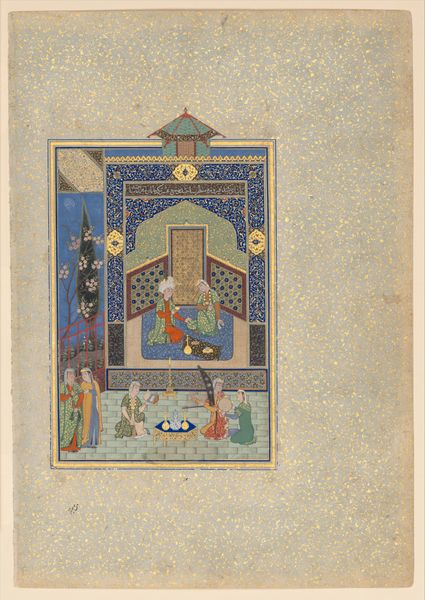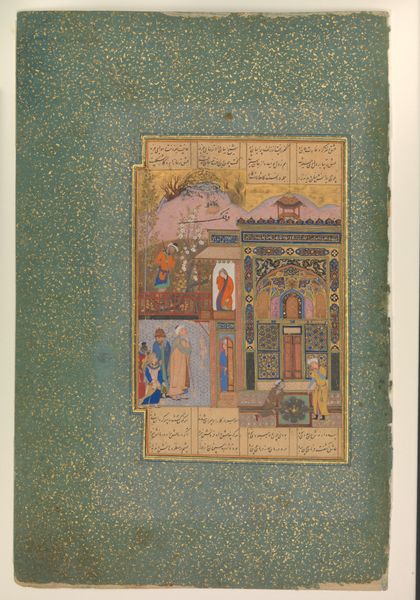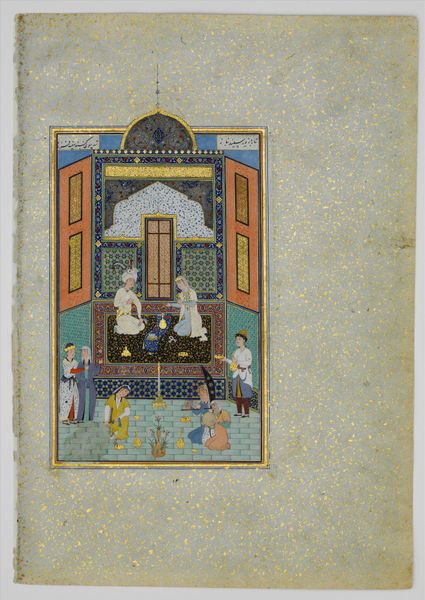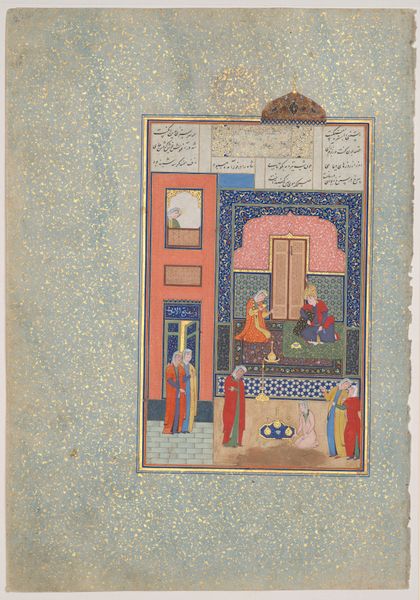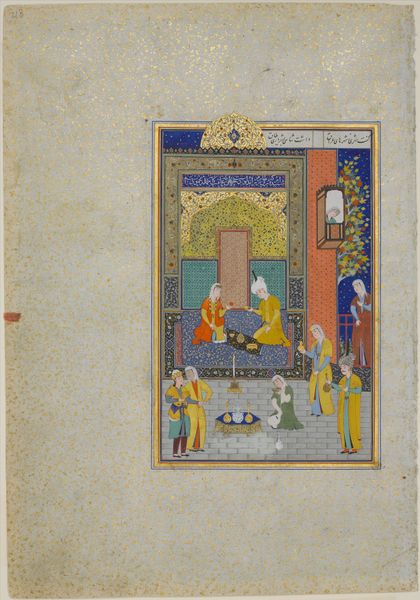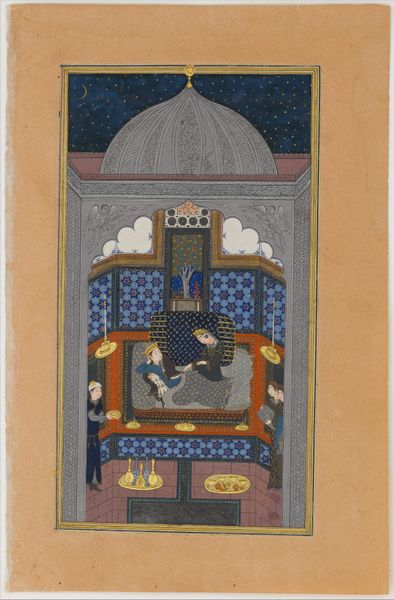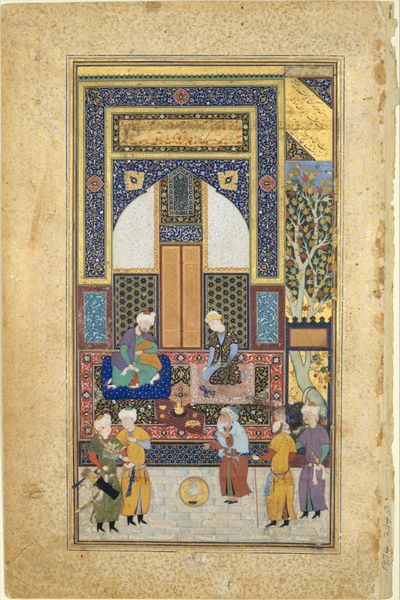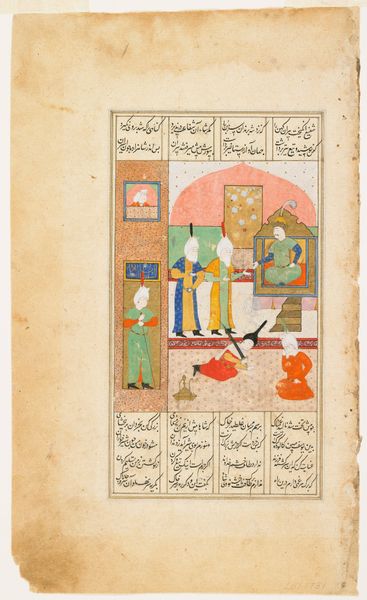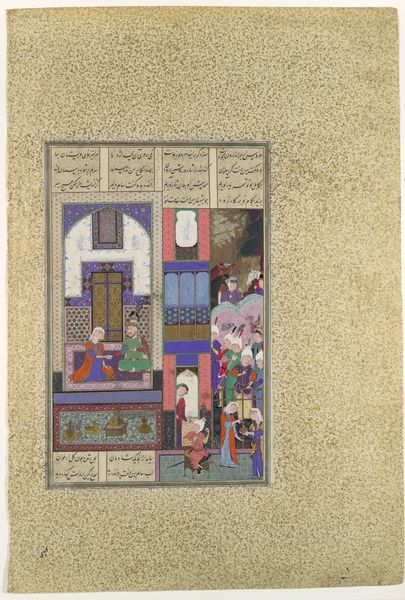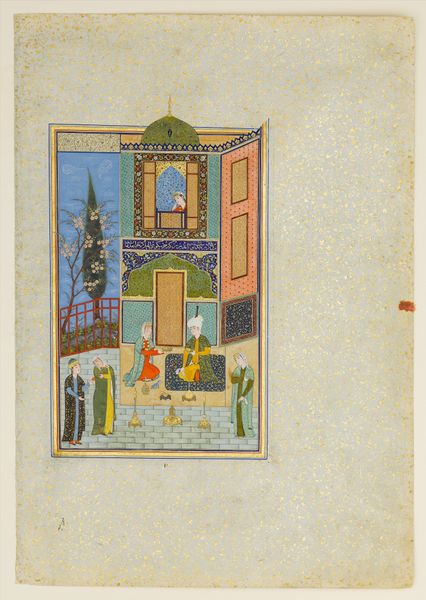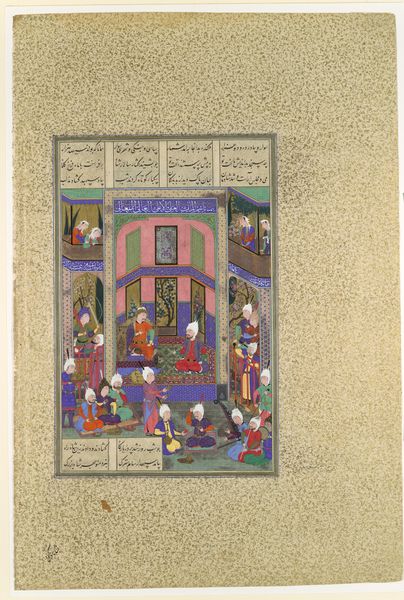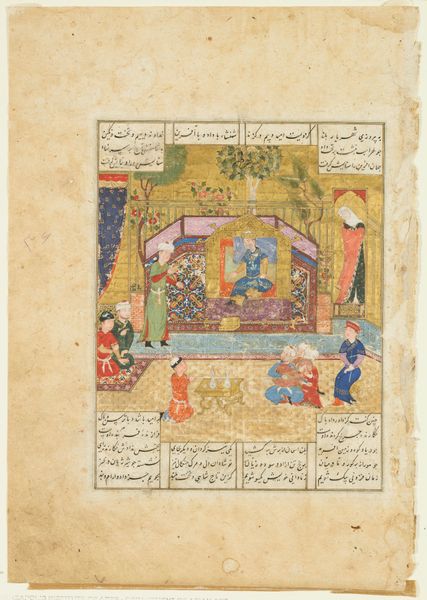
"A Ruffian Spares the Life of a Poor Man", Folio 4v from a Mantiq al-Tayr (Language of the Birds) 1575 - 1625
0:00
0:00
painting, watercolor
#
narrative-art
#
painting
#
figuration
#
watercolor
#
coloured pencil
#
men
#
islamic-art
#
miniature
Dimensions: Painting: H. 7 3/4 in. (19.7 cm) W. 4 1/2 in. (11.4 cm) Page: H. 12 7/8 in. (32.7 cm) W. 8 5/16 in. (21.1 cm) Mat: H. 19 1/4 in. (48.9 cm) W. 14 1/4 in. (36.2 cm)
Copyright: Public Domain
Curator: Look at this small but intensely vibrant painting. It’s a folio, dating from between 1575 and 1625, illustrating a scene from Farid al-Din `Attar’s "Mantiq al-Tayr," or "Language of the Birds". It’s called "A Ruffian Spares the Life of a Poor Man." Editor: It feels almost dreamlike. The flattened perspective and those luminous colors pull you into a world where something quite serious seems to be unfolding, yet the overall impression is one of heightened reality, not exactly harsh. Curator: That's partly the nature of the Persian miniature tradition. It compresses depth to emphasize symbolism and storytelling. Notice the central interior. You have a dynamic play happening between observers within this elaborate building and then the tense scene about to happen right in front of us, a murder about to be interrupted. Editor: And what is the emotional function of the ruffian holding back his sword? There's a direct plea being made towards this would-be executioner by a second figure beside him, but it is all in support of someone laid at the foot of this bully about to deal with his punishment? Is the artist encouraging viewers to question traditional codes of honor? Is it speaking to some shift in the idea of the moral individual at the time? Curator: Precisely. It reflects Attar's broader spiritual and philosophical concerns with morality in Sufi thought. Each character represents aspects of the soul’s journey toward enlightenment, where even seemingly cruel acts can lead to unexpected grace. That central arch, adorned with intricate patterns, frames the scene and invites contemplation on divine mercy. The colours reinforce this duality: deep blues for the earthly realm, contrasting with golds hinting at the divine. Editor: And this is where the social and political aspects surface. Attar’s Sufi poetry provided a vocabulary for social reform, so its dissemination through illustrations like these—placed within luxurious illuminated books—provided opportunities for reflecting the contemporary social challenges in 16th and 17th century Iranian life. It becomes a lens for navigating justice and compassion. Curator: Right. What resonates so strongly is this blending of ethical inquiry, intricate symbolism, and narrative that encapsulates both a specific historical context and timeless truths about human morality. Editor: I am intrigued by how art serves not just as a beautiful artefact but as an instrument for exploring complicated narratives and social issues, using symbolism to push the audience to see new points of view.
Comments
No comments
Be the first to comment and join the conversation on the ultimate creative platform.
